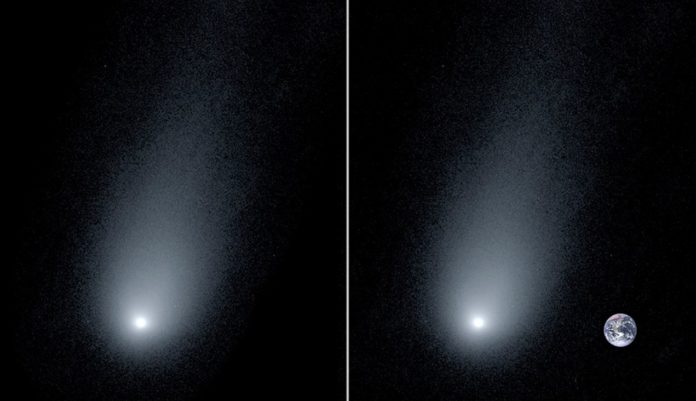Astronomers from Yale University, working with one of the Keck Observatory telescopes, received a new detailed image of Borisov’s interstellar comet. Thanks to this, scientists were able to give an estimate of the length of the tail and nucleus of the comet, according to Yale University.
Comet 2I / Borisov was discovered in August this year by astronomer Gennady Borisov. Subsequently, the assumption was confirmed that it has an extrasolar origin and is the second interstellar object known after the asteroid 1I / Oumuamua, moves in a hyperbolic orbit and will soon leave the solar system. Our star 2I/Borisova will approach on December 9, and with the Earth – December 28, 2019..
A large-scale observation campaign involving ground and space telescopes has now been launched, and its results will allow us to understand the composition and properties of comets in other planetary and compare them with the bodies that have already been studied. Scientists have already determined that the first interstellar comet is very similar to similar objects in the solar system, and also identified the expiration of cyanide molecules from the surface of the nucleus and gave an assessment of the rate of water loss.
A new detailed image of comet Borisov was obtained on October 24, 2019, using the LRIS (Low-Resolution Imaging Spectrometer), installed on one of the 10-meter telescopes of the Keck Observatory. Scientists were able to estimate the length of the comet’s tail, clearly visible in the image – it is about 160,000 kilometres, which is 14 times the size of the Earth.
At the same time, the comet’s nucleus is about 1.7 kilometres wide. Astronomers note that as 2I/Borisov approaches the Sun, the surface of its core is increasingly heated by the Sun’s radiation, which leads to an increase in the amount of gas and fine dust in the coma, as well as a change in its structure.
